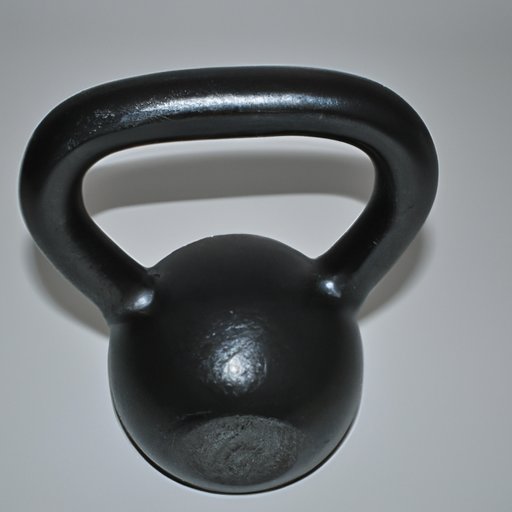
Introduction
Kettlebell weight lifting has become a staple in many workout routines, offering a full-body workout that can build strength, flexibility, and cardiovascular endurance. However, one of the most common challenges facing beginners is selecting the right weight kettlebell for their workout. With a variety of weights available, it can be overwhelming to determine which one is best suited for your fitness level and goals. In this article, we will explore the benefits of using a kettlebell, how to choose the right weight, and the impact of kettlebell weight on your workout.
The Benefits of Using a Weighted Kettlebell: Why You Should Add One to Your Workout Routine
Using a kettlebell during your workout can offer a myriad of benefits. Beyond building strength and muscle tone, using a kettlebell on a regular basis can also improve balance, coordination, and cardiovascular endurance. Not only that, but kettlebells can also be used in a variety of workout routines, making them versatile and adaptable to many different fitness goals. Some common kettlebell exercises include the kettlebell swing, Turkish get-up, and kettlebell clean and press.
How to Choose the Right Weight for Your Kettlebell: A Beginner’s Guide
When selecting a kettlebell weight, there are a number of factors to consider. Your fitness level, experience with weight training, and overall strength should all be taken into account. As a general rule, beginners should start with a lighter weight kettlebell and gradually increase the weight as they become more comfortable with the exercises and their form improves. A chart or table can be helpful in determining the appropriate weight for your kettlebell based on your fitness level and experience.
The Impact of Kettlebell Weight on Your Workout: Understanding the Science Behind the Exercise
The weight of your kettlebell can have a significant impact on your workout routine, affecting the muscles worked and the overall intensity of the exercise. Using a heavier kettlebell can offer more resistance, while a lighter weight can improve coordination and flexibility. Studies have shown that kettlebell exercises can be an effective way to build muscle strength, increase cardiovascular fitness, and improve overall health.
Building Strength with Kettlebells: Why Heavy Weight Isn’t Always Better
While it may be tempting to choose a heavy weight kettlebell, using a weight that is too heavy can be dangerous and counterproductive. Lifting a weight that is too heavy can lead to poor form, injury, and unnecessary strain on the body. In fact, lighter kettlebells can be just as effective for building muscle strength when used with proper technique and full muscle engagement. Choosing a kettlebell weight that is appropriate for your fitness level and goals is key to maximizing your results and avoiding injury.
From Light to Heavy: A Journey Through Kettlebell Weights
There are a variety of kettlebell weights available, ranging from light to heavy. Each weight has its own purpose and benefits for different fitness goals and muscle groups. For example, lighter kettlebells may be better suited for beginners, while heavier weights may be more appropriate for advanced weightlifters. It is important to progress gradually through the different weights and maintain proper technique to avoid injury and maximize your results.
The Pros and Cons of Kettlebell Weight Training: Does It Work for Everyone?
While kettlebell weight training can be a great addition to your workout routine, there are potential benefits and drawbacks to consider. Some individuals may experience discomfort or injury when using kettlebells, while others may find them to be an effective way to build strength, tone muscles, and improve overall health. It is important to consult with a trainer or physician before incorporating kettlebells into your routine and to use proper form and technique to avoid injury.
Kettlebell Weight Lifting: Overcoming Common Mistakes and Maximizing Your Results
When lifting a kettlebell, it is important to use proper form and technique to avoid injury and maximize your results. Some common mistakes to avoid include improper grip, improper breathing, and swinging the bell too high. Gradually increasing the weight and maintaining proper technique can help you build strength, flexibility, and endurance over time.
Conclusion
Choosing the right weight kettlebell for your workout routine can be a challenge, but with careful consideration of your fitness level and overall goals, it is possible to find a weight that is safe and effective for your needs. Incorporating kettlebell weight lifting into your routine can offer a full-body workout that can improve your strength, flexibility, and cardiovascular health. Remember to start with a lighter weight kettlebell and progress gradually, and always use proper form and technique to avoid injury.




